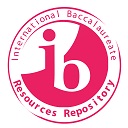Naturalistic observations
HL Paper 3: Naturalistic observations
This component focuses on naturalistic observations - the one type of observation that the IB asks you to know for the exam. The characteristics of these observations will be discussed, as well as the strengths and limitations of the research method. Although you are not required to evaluate the method on Paper 3, this may prove useful on either Paper 1 or 2.
Before beginning this module, be sure to read HL: Understanding observations
Upon completion of this section, you should be able to discuss the following concepts:
- Emergent coding
- Inter-rater reliability
- Naturalistic vs lab observations
- Overt vs covert observations
- Participant vs non-participant observations
What is a naturalistic observation?
Start by watching the following video.
Now that you know what a naturalistic observation is, here are two other characteristics for you to think about.
- The observer collects data from participants’ in their natural environments without any deliberate manipulation of the setting
- The researcher may record qualitative ‘field notes’, describing behaviours of interest while diagrams and sketches may also be used. Video may be used, but this is difficult in a covert observation as it may raise the suspicion of people being observed.
- In a covert observation, participants are unaware of the observer and according to the BPS this is ethical if the study takes place in a public setting; data collected will be more credible as behaviour will be less inhibited and unaffected by demand characteristics or evaluation apprehension.
- In an overt naturalistic observation, participants give consent to being observed. Although the environment is not manipulated by the researcher, demand characteristics, or "reactivity" may affect the participants' behaviour.
- In a participant observation the researcher becomes actively involved within the community or group that he or she is studying; this facilitates a unique perspective that would not have been otherwise possible. A concern of participant observations is that they may be open to researcher bias.
- In a non-participant observation, the researcher remains separate from the activities of the group and does not interact with participants while conducting the observation; this lack of involvement means that the researcher is free to focus entirely on the data collection, arguably leading to a more accurate record of events.
Task 1. Thinking about research
Watch the following video - The Birth of a Word.
After watching the video, The Birth of a Word, write a paragraph in which you describe the study to a friend. Be sure to identify this as a lab or naturalistic observation; overt or covert; participant or non-participant. Explain at least one strength and one limitation of the study.
What to do with data?
There are two ways that researchers can interpret the data that they collect during an observation.
First, there is a priori coding. This means that the researchers decide what they will look for before they begin their observations. This leads to a checklist used by researchers to measure the frequency of certain behaviours. This is a quantitative approach to naturalistic observations. It is also a deductive approach to research.
Then there is emergent coding. This means that researchers carry out their observations taking notes on everything that they see that is related to the question that they are investigating. After all the field notes are collected, researcher read through the notes looking for trends. The trends that emerge from the notes lead researchers to draw conclusions or pose hypotheses about the behaviour. This is a qualitative approach to naturalistic observations. It is also an inductive approach to research.
- Naturalistic observations have high ecological validity. The collection of data takes place in the participants' natural environment and it is assumed that the participants behave as they usually do, in contrast to research in laboratories. This, of course, means that internal validity is low.
- They can be used to collect data in cases where it would be impossible or unethical to do so otherwise—for example, research on people with Alzheimer’s disease.
- There is the risk that people do react to being observed - that is, there may be reactivity involved.
- If the researcher collects the data alone, there may be problems in checking the data. However, multiple observers in the same field can compare data to ensure a match of the data (sometimes called inter-observer reliability). The researcher can also document the fieldwork extensively and explain how he or she arrived at the conclusions reached, in order to promote credibility.
- There are ethical considerations concerning the appropriateness of observing strangers without their knowledge. The researcher should always be careful not to violate the privacy of the participants.
- Naturalistic observations tell us what people do, but not why they do it.
Checking for understanding
Try to answer each of the following questions to the best of your ability before clicking on the "eye" to see the correct response.
1. Define participant observation. What is one advantage of this method? One disadvantage?
Participant observation is when the researcher is part of the group that s/he is studying. So, if I am involved in a classroom discussion but at the same time carrying out an observation, this is a participant observation. Festinger's classic study of the Doomsday cult was a participant observation. Members of Festinger's team joined the cult in order to study it.
Advantages include that the researcher is less detached from the people being observed. The context in which the behaviours are demonstrated can be better understood by the researcher. This allows the researcher to understand the perspective of the participants. The researcher can also interact and ask questions of the people being observed to clarify behaviours.
The disadvantages include that the researcher may unintentionally change behaviours by interacting with the people being observed. S/he may also lose objectivity by developing a close relationship with the people, or actually finding their behaviour problematic. It is also difficult to collect data when the researcher is part of the group and engaged in the same activity.
2. Discuss how two different participant effects may overly influence an observation.
One participant effect is reactivity. Reactivity is when a person changes his/her behaviour, simply because they know that they are being observed. This is often seen in clinical psychology where someone who is to be diagnosed acts differently simply because they know that a diagnosis is expected. Reactivity is very similar to "expectancy effect", but it also is at an unconscious level where body language, as well as spoken language patterns, may change. This may also happen when a teacher is being observed by his boss in the classroom.
Another example is the social desirability effect. This is a type of reactivity where the person being observed does things that are socially appropriate and avoids behaviour that may look him/her look bad in front of the researcher.
3. What is a naturalistic observation? Explain one strength and one limitation of carrying out a naturalistic observation rather than a controlled observation.
A naturalistic observation takes place in a natural environment - that is, it is not carried out in a laboratory. One strength is that is high in ecological validity. The environment is not artificial so reactivity should be lower and the participant should act as "he usually does." The greatest limitation of a naturalistic setting is that there is no control over other variables. This means that extraneous variables could have a significant effect on the behaviour of the participant. In addition, naturalistic observations are difficult to replicate. In planning a naturalistic observation in a public space, it is also difficult to manage the sample. For example, if I want to do an observation on how tourists cope with the language barrier in Czech restaurants, I may find that on several of my visits to a popular restaurant, there are no tourists.
4. What are the advantages of a non-participant observation?
There are several advantages of a non-participant observation. First, it is easier to take notes. Since the researcher is not part of the activity being observed, note-taking is relatively easy. It is also non-invasive - that is, it does not interfere with the behaviour of the participants or influence their behaviour in any way. It is also easier to have several researchers watching the same behaviours to establish inter-rater reliability.
5. What is a covert observation? When would this technique most likely be used? What are some of the limitations of this technique?
In a covert observation, the participants are not aware that they are being observed. This technique is used when the researcher feels that if the participants knew that they were being observed, their behaviours would change. In some rather classic observations, such as Festinger's cult study, covert observations were used to study a very closed group that would not have given consent. This has significant ethical problems.
There are several limitations to this technique. Ethics is perhaps the most obvious. In addition, if it is also a participant observer, the researcher has to be careful not to be "caught." This may lead to unnatural behaviour on the behalf of the researcher which could in turn influence the behaviour of the participants. Also, notes have to be taken when participants are not there. This often leads to the problem of memory distortion where information is written down several hours after the behaviour is observed. Finally, in observational research the debriefings are often important for establishing credibility - in other words, the psychologist asks the participants if they agree with his interpretation of their behaviour. In the case of covert observations, this may not be possible or the reaction upon finding out that they were being watched may lead to a withdrawal of the data or a negative response to the interpretations.
6. Discuss three things that a researcher might do to prepare to carry out an observation.
There are several things that a researcher must do to prepare for an observation. This includes what type of observation will I carry out? Ethical considerations. How will the sample be obtained? How will data be recorded? How will variables be defined? Will the observation be inductive or deductive in nature? What type of data will be obtained and how will it be analysed?
7. What is meant by inter-coder or inter-rater reliability?
Both of these terms refer to the amount of agreement among a team of researchers. In deductive research, researchers use a priori coding. This means that they decide as a team before they carry out the observation what they will look for. They then usually collect quantitative data regarding the frequency or duration of the behaviour. For example, they have a checklist of aggressive behaviours and they watch to see how much aggression is demonstrated on the playground. The frequency with which this was observed is compared between the researchers to see if they have similar findings.
Inductive approaches to observations use emergent coding - that is, they look for themes in behaviour after they have collected their data. The researchers tend not to have a hypothesis, but they want to see "what happens during recess." So, after watching recess on the playground, researchers will then read through their notes and look for trends in the data. From the trends, they will then write an interpretation. When looking to see if there is a similarity in the findings this is called inter-coder reliability. Both terms define the level of similarity, but the philosophy upon which the conclusions are reached is different.
Continue on to Interviews: Unstructured, semi-structured, and focus groups.

 IB Docs (2) Team
IB Docs (2) Team

